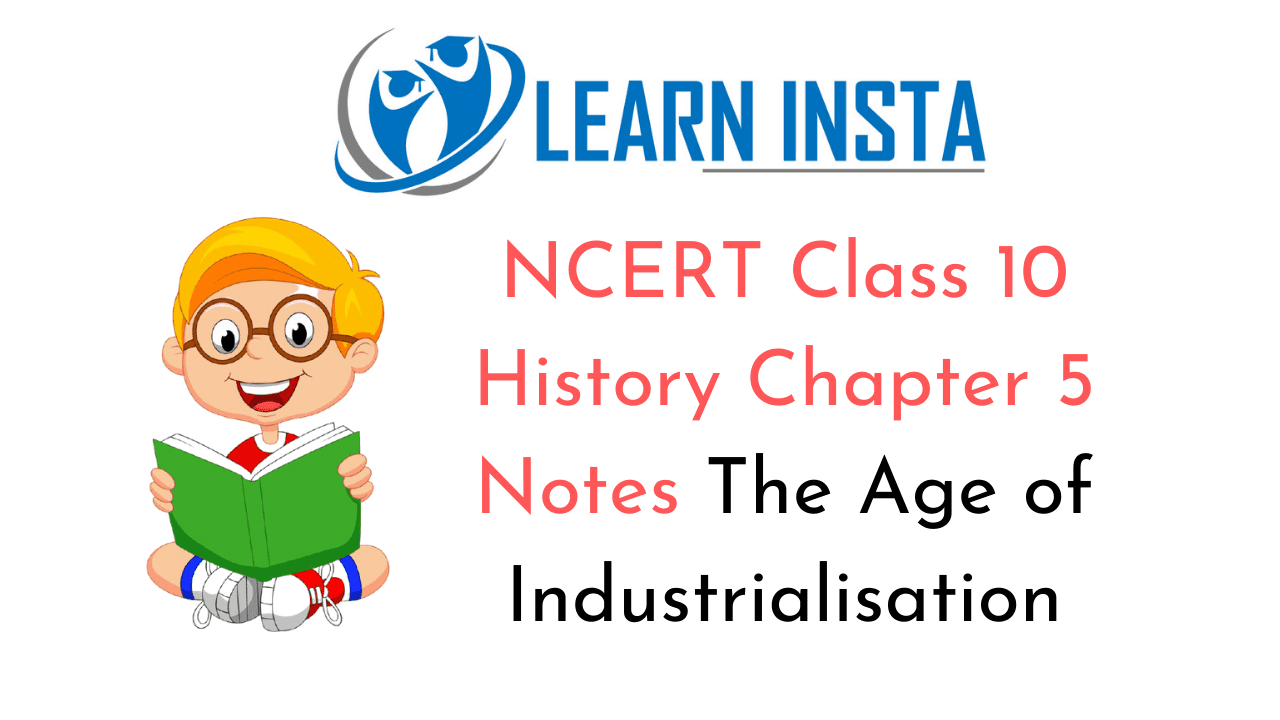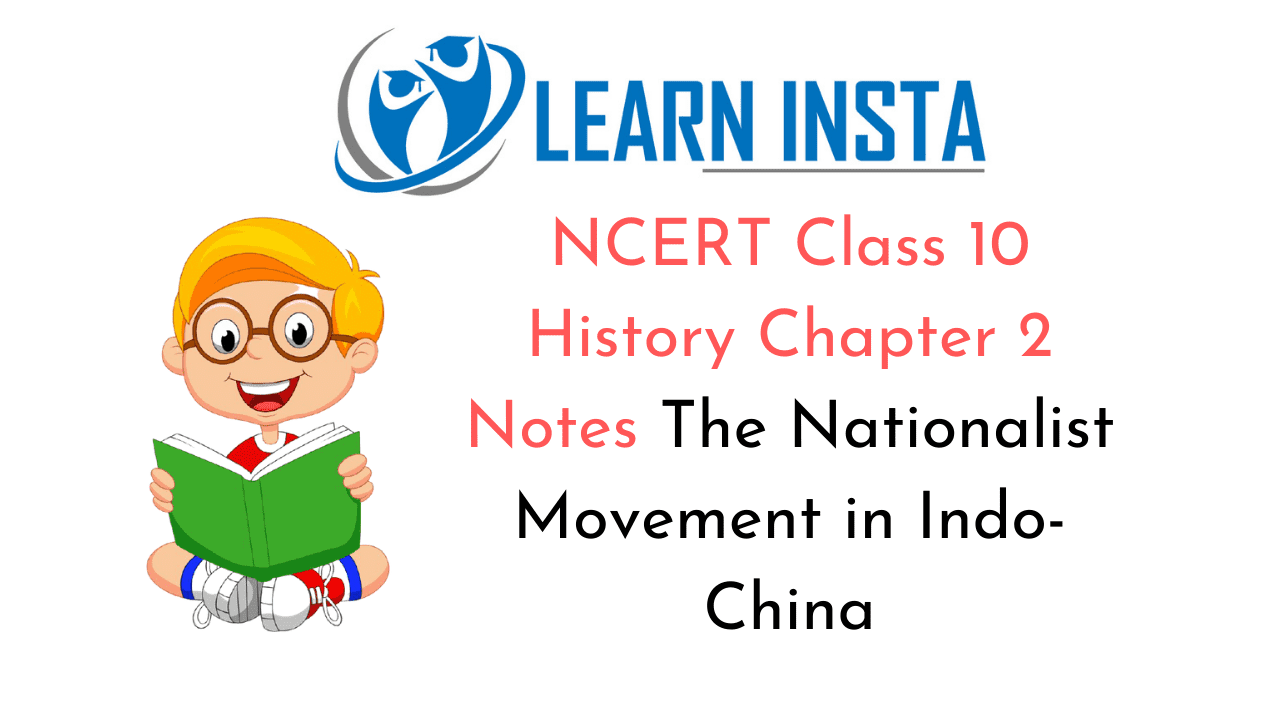
On this page, you will find NCERT Class 10 History Chapter 6 Notes Pdf free download. CBSE Class 10 Social Science Notes History Chapter 6 SST Work, Life and Leisure will seemingly, help them to revise the important concepts in less time.
Work, Life and Leisure Class 10 Notes Social Science History Chapter 6
CBSE Class 10 History Chapter 6 Notes Understanding the Lesson
1. Urbanisation has a long history. It took over 200 years to develop the modern city worldwide. Three processes that have shaped modern cities in decisive ways are – the rise of industrial capitalism, the establishment of colonial rule over large parts of the world, and the development of democratic ideals.
2. The process of urbanisation is traced out in two modern cities namely London and Bombay. London was the largest city in the world, and an imperial centre in the nineteenth century. Bombay was one of the most important modern cities in the Indian subcontinent.
3. London: By 1750, London was a colossal city with a population of about 675,000. Over the nineteenth century, it continued to expand. Its population multiplied four-fold in the 70 years between 1810 and 1880.
4. The city of London was a powerful magnet for migrant populations, even though it did not have large factories. During the First World War, London began manufacturing motor cars and electrical goods, and the number of large factories increased that opened job opportunities.
5. Growth of London was marked by rise in crime. Criminal activities increased in the city in the 1870s. Several measures were taken to put a check on such activities, for example, the population of criminals was counted, their activities were watched, etc. Many of the criminals listed were poor people who lived by stealing.
6. Poverty forced a large number of women to work as domestic servants. They also made their living through activities like tailoring, washing or matchbox making. So far children of the marginal groups were concerned, they found work in small underpaid factories. However, the Compulsory Elementary Education Act, that came in 1870, stopped children from doing work in industries.
7. As people from countryside began pouring in London after the Industrial Revolution, they faced the problem of housing. Factory or workshop owners did not house the migrant workers. Instead, individual landowners put up cheap, and usually unsafe, tenements for the new arrivals.
8. In comparison to countryside poverty was more visible in the city. People were bound to live in crowded slums which lacked sanitation. Hence, concern grew among the better-off city dwellers. They demanded that slums simply be cleared away. As a result, workers’ mass housing schemes were planned for the London poor.
9. A variety of steps were taken to clean up London. Attempts were made to decongest localities, green the open spaces, reduce pollution and landscape the city. Large blocks of apartments were built. Attempts were also made to bridge the differences between city and countryside through ideas such as the Green Belt around London.
10. Between 1919 and 1939, a million houses were built by local authorities for housing the working classes. As the city expanded, new forms of mass transport became necessary to enable people living in garden suburbs to walk to work in the city.
11. The London underground railway partially solved the housing crisis by carrying large masses of people to and from the city. The very first section of the underground in the world opened on 10 January, 1863 between Paddington and Farrington Street in London. Now the population in the city became more dispersed.
12. The function and the shape of the family were completely transformed by life in the industrial city. Ties between members of households loosened, and among the working class the institution of marriage tended to break down. A new spirit of individualism developed among both men and women. But they did not have equal access to the new urban space. The public space became increasingly a male preserve and the domestic sphere was seen as the proper place for women.
13. City people entertained themselves as per their affordability and taste. Wealthy Britishers went to the opera and the theatre. Working classes met in pubs to have a drink, exchange news etc. Music-halls were popular among the lower classes. By the early twentieth century, cinema became the great source of entertainment for mixed audiences.
14. Bombay: Indian cities did not mushroom in the nineteenth century because the pace of urbanisation in India was rather slow under colonial rule. Bombay was the premier city of India which expanded rapidly from the late nineteenth century.
15. Bombay became the capital of the Bombay Presidency in 1819. The city expanded quickly. With the growth of trade in cotton and opium, large communities of traders and bankers came to settle in Bombay. Artisans and shopkeepers also flowed in the city. The establishment of textile mills opened the door for the migrants who were mostly from the nearby district of Ratnagiri.
16. Bombay was a crowded city. From its earliest days, the city did not grow according to any plan, and houses, especially in the Fort area, were interspersed with gardens. The crisis of housing and water supply became acute by the mid-1850s. The arrival of the textile mills only increased the pressure on Bombay’s housing.
17. Class distinction was clearly visible in the city. The elite class which included richer Paj’sis, Muslims and upper caste traders and industrialists of Bombay lived in bungalows while the working people lived in the thickly populated
18. Chawls were multi-storeyed structures. Each chawl was divided into smaller one-room tenements which had no private toilets. The homes being small, streets and neighbourhoods were used for a variety of activities such as cooking, washing and sleeping. Liquor shops and akharas came up in any empty spot. Chawls were also the place of the exchange of news about jobs, strikes, riots or demonstrations.
19. Chawls also lacked sanitation. There were fears among people about the plague epidemic. Hence, the City of Bombay Improvement Trust was established in 1898. It focused on clearing poorer homes out of the city centre.
20. Since there was scarcity of land in Bombay, so massive reclamation projects were taken up to develop the city. As a result, Bombay expanded to about 22 square miles. But increase in population did not stop. So, attempts were also made to utilise every bit of the available area. New areas were reclaimed from the sea.
21. Despite its massive overcrowding and difficult living conditions, Bombay appears to many as a ‘city of dreams’. There has been a flourishing film industry in the city. Many Bombay films deal with the arrival in the city of new migrants, and their encounters with the real pressures of daily life.
22. The process of urbanisation deteriorated the quality of air and water. Excessive noise became a feature of urban life. Hence, people in England joined campaigns for cleaner air. The Smoke Abatement Acts of 1847 and 1853 did not always work to clear the air. In India, Calcutta had a long history of air pollution. Its inhabitants inhaled grey smoke. The main polluters were the industries and establishments that used steam engine run on coal. The Bengal Smoke Nuisance Commission intervened and finally industrial smoke was controlled.
Work, Life and Leisure Class 10 CBSE Notes Important Terms
Urbanisation: Development of a city or town.
Metropolis: A large, densely populated city of a country or state, often the capital of the region.
Philanthropist: Someone who works for social upliftment and charity, donating time and money for the purpose.
Tenement: Run-down and often overcrowded apartment house, especially in a poor section of a large city.
Temperance Movement: A largely middle class-led social reform movement which emerged in Britain and America from the nineteenth century onwards. It identified alcoholism as the cause of the ruin of families and society, and aimed at reducing the consumption of alcoholic drinks particularly amongst the working classes.
Asphyxiation: Suffocation due to lack of oxygen supply.
Individualism: A theory which promotes the liberty, rights or independent action of the individual, rather than of the community.
Presidency cities: The capitals of the Bombay, Bengal and Madras Presidencies in British India.
Akharas: Traditional wrestling schools, generally located in every neighbourhood, where young people were trained to ensure both physical and moral fitness.
Depressed classes: A term often used to denote those who were seen within the caste order as ‘lower castes’ and ‘untouchables’.
Reclamation: The reclaiming of marshy or submerged areas or other wasteland for settlements, cultivation or other use.
Notes of History Class 10 Chapter 6 Time Period
1784: First reclamation project in Bombay began.
1847-1853: The Smoke Abatement Acts of 1847 and 1853 were passed.
10 January, 1863: The first section of the underground railway in the world opened between Paddington and Farrington Street in London.
1863: Calcutta became the first Indian city to get Smoke Nuisance Legislation 1865: Bombay’s first Municipal Commissioner, Arthur Crawford was appointed.
1880: The famous novel “Debganer Martye Aagaman” was written by Durgacharan Ray.
November 1887: A riot by London’s poor took place. It is widely known as the Bloody Sunday.
1918: To keep rents reasonable, Rent Act was passed.
1925: Bombay became the first film capital of India.



